
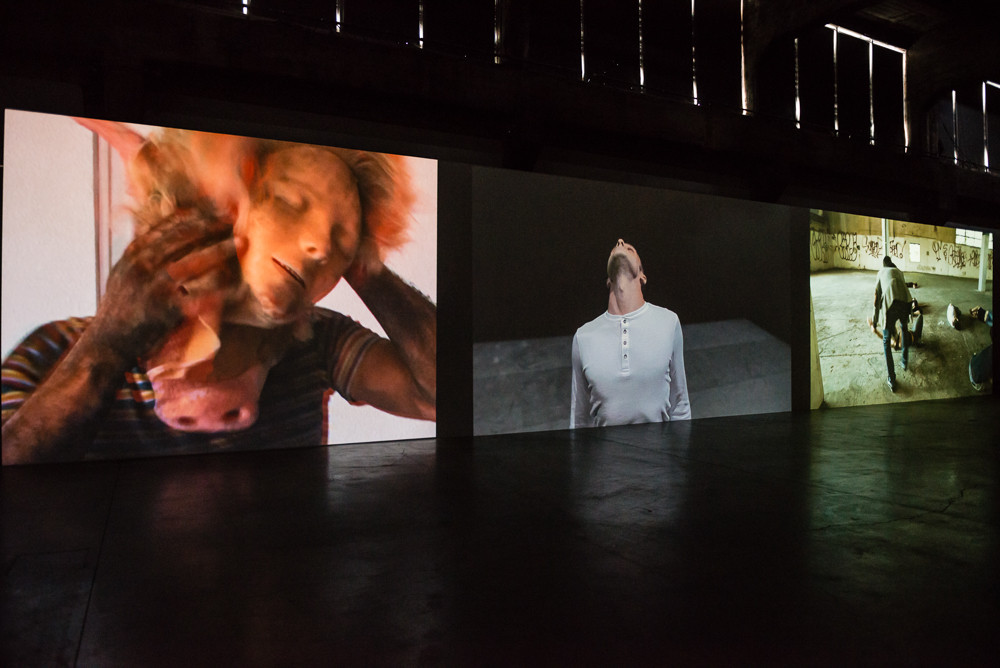
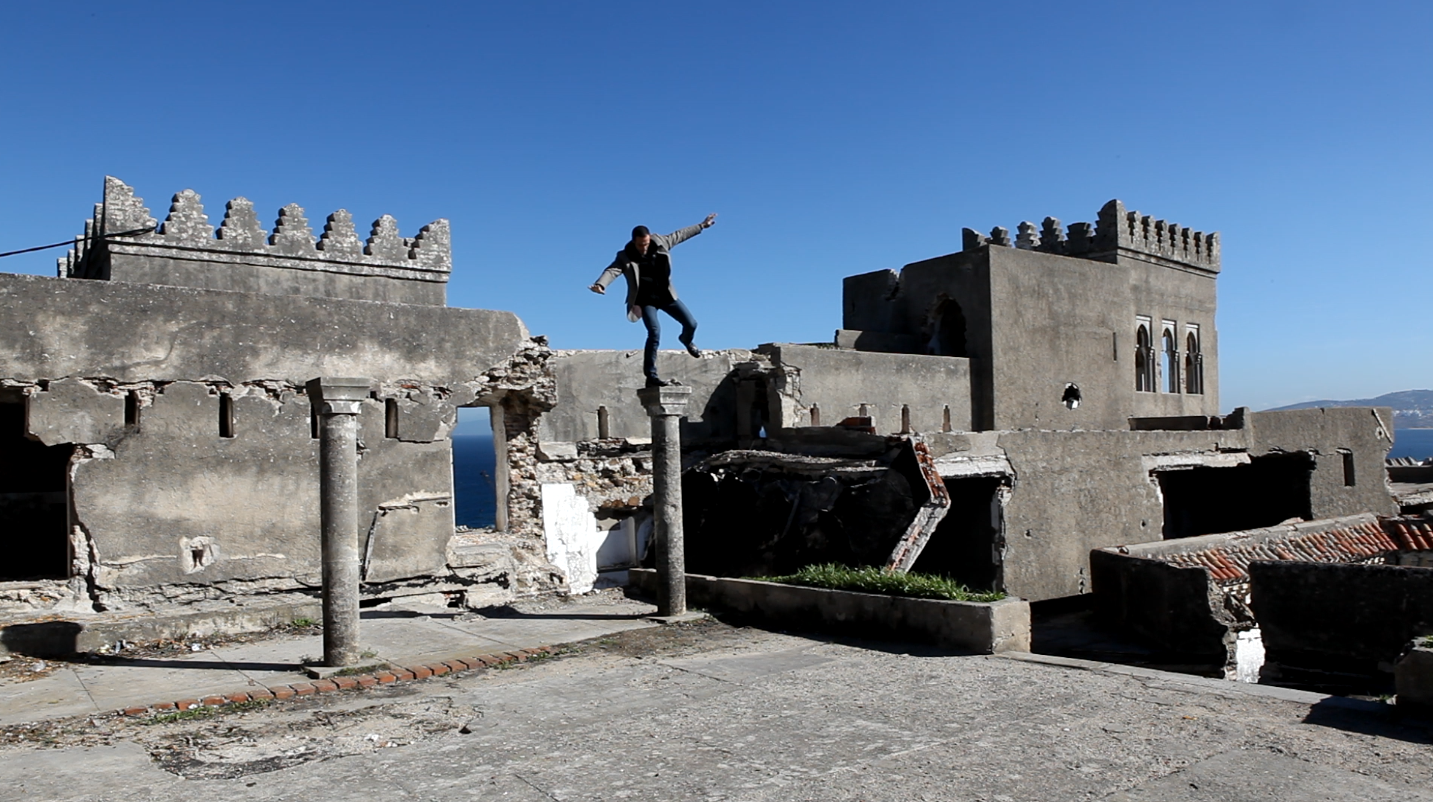

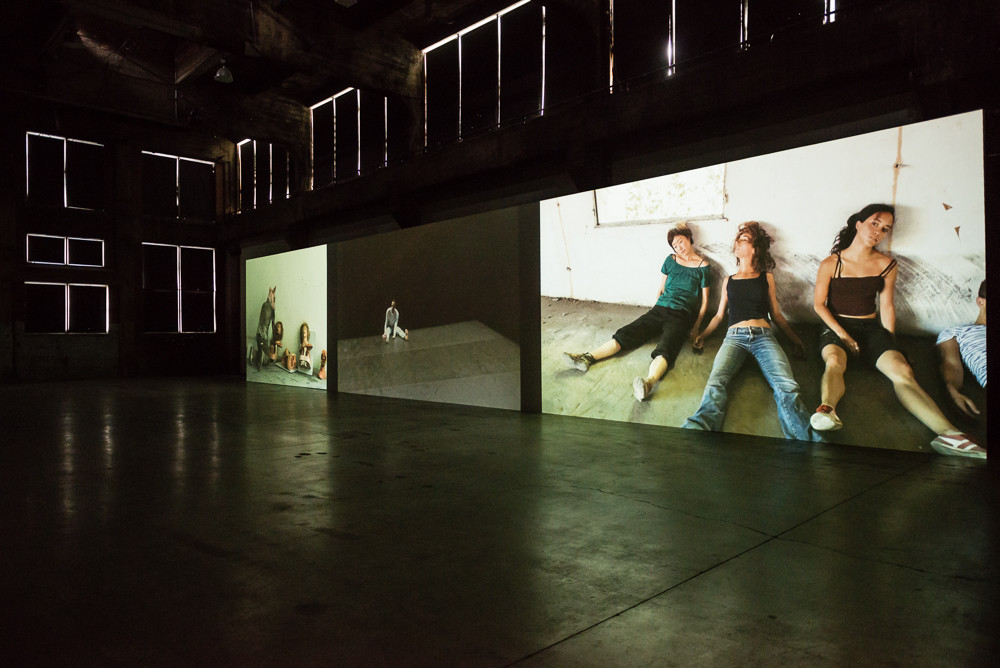
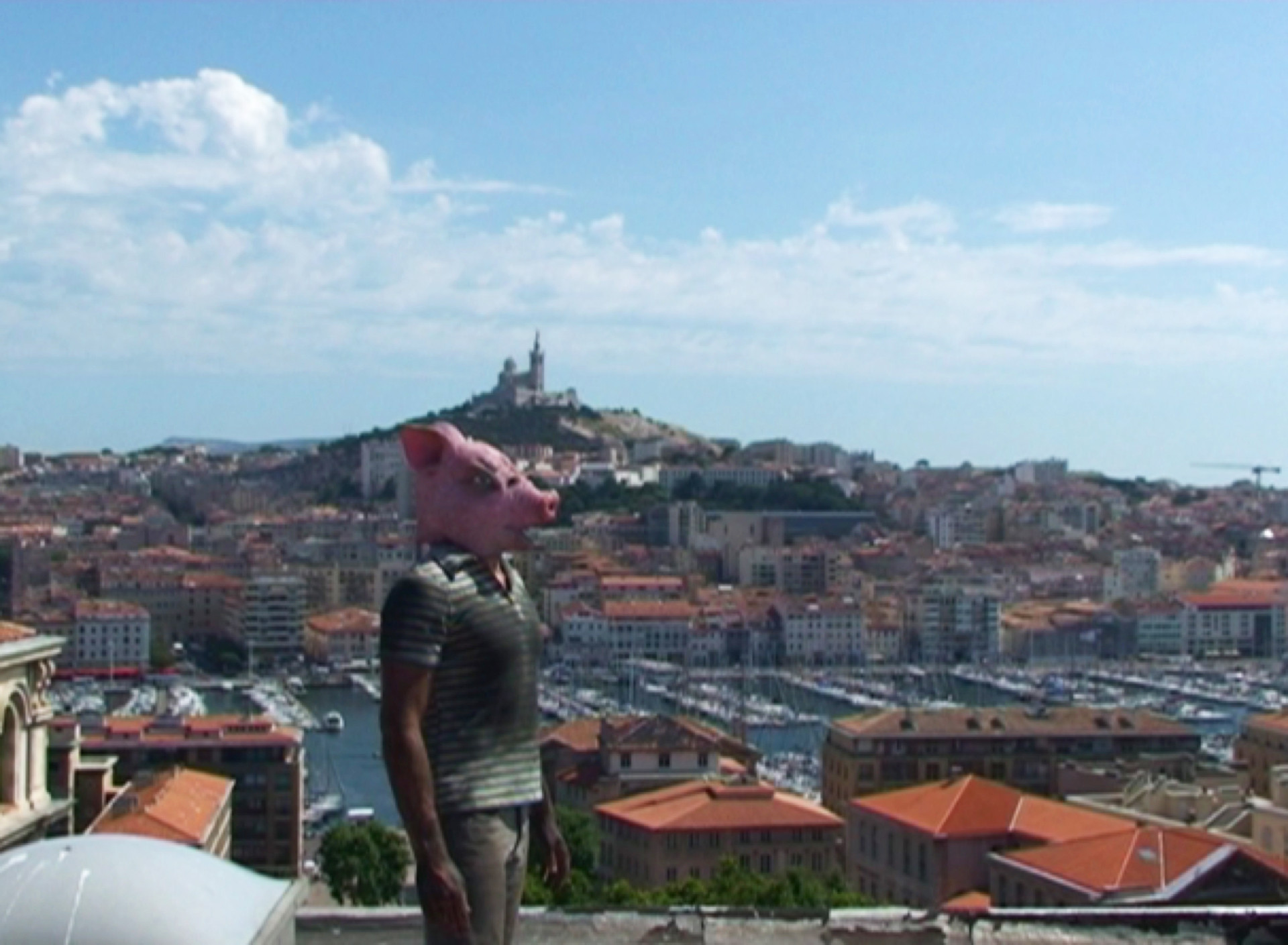
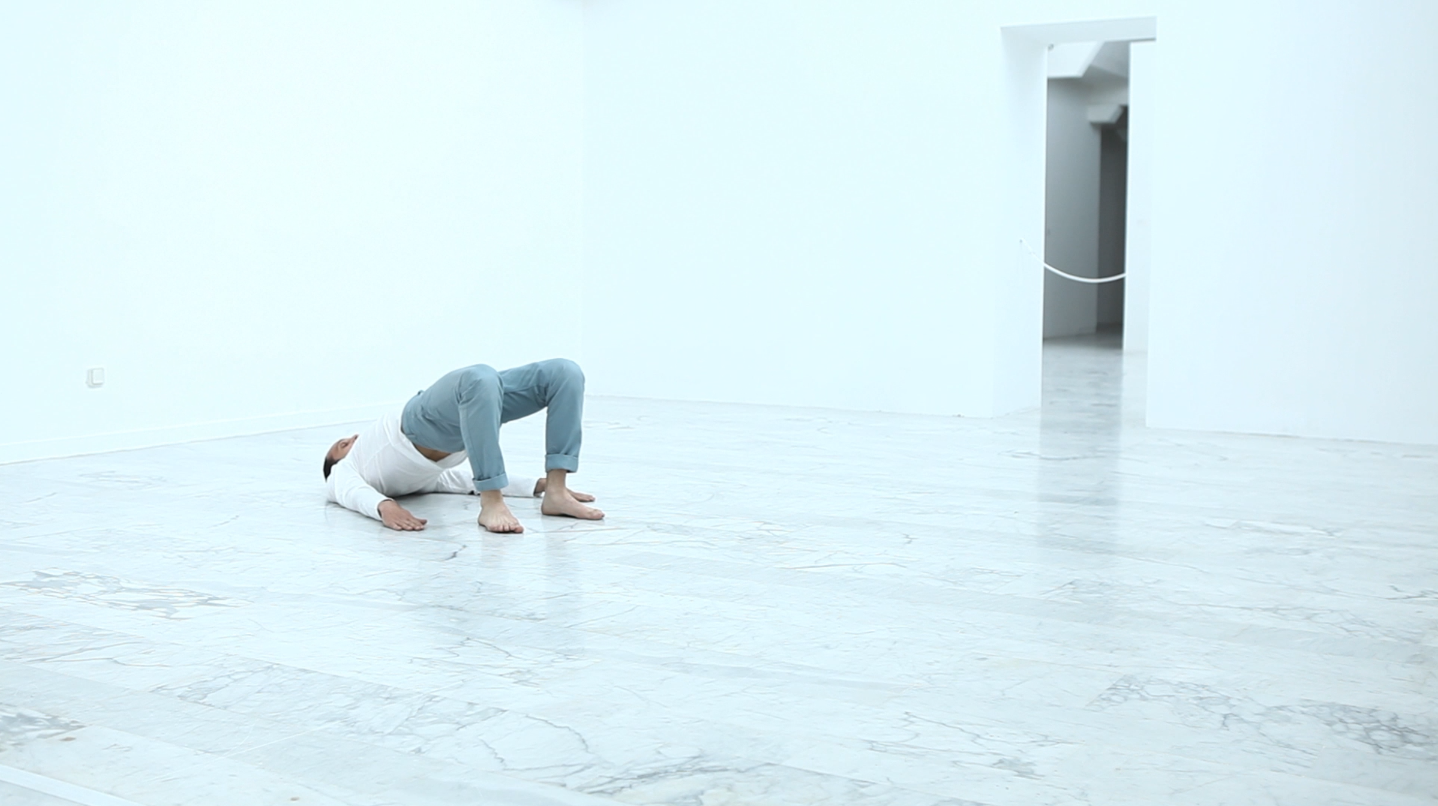
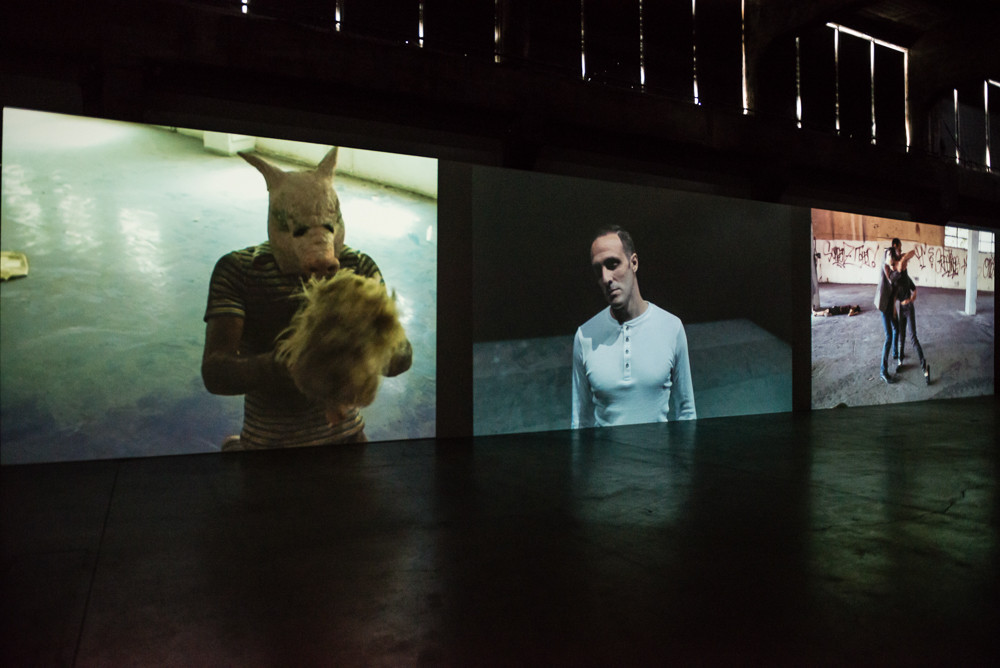
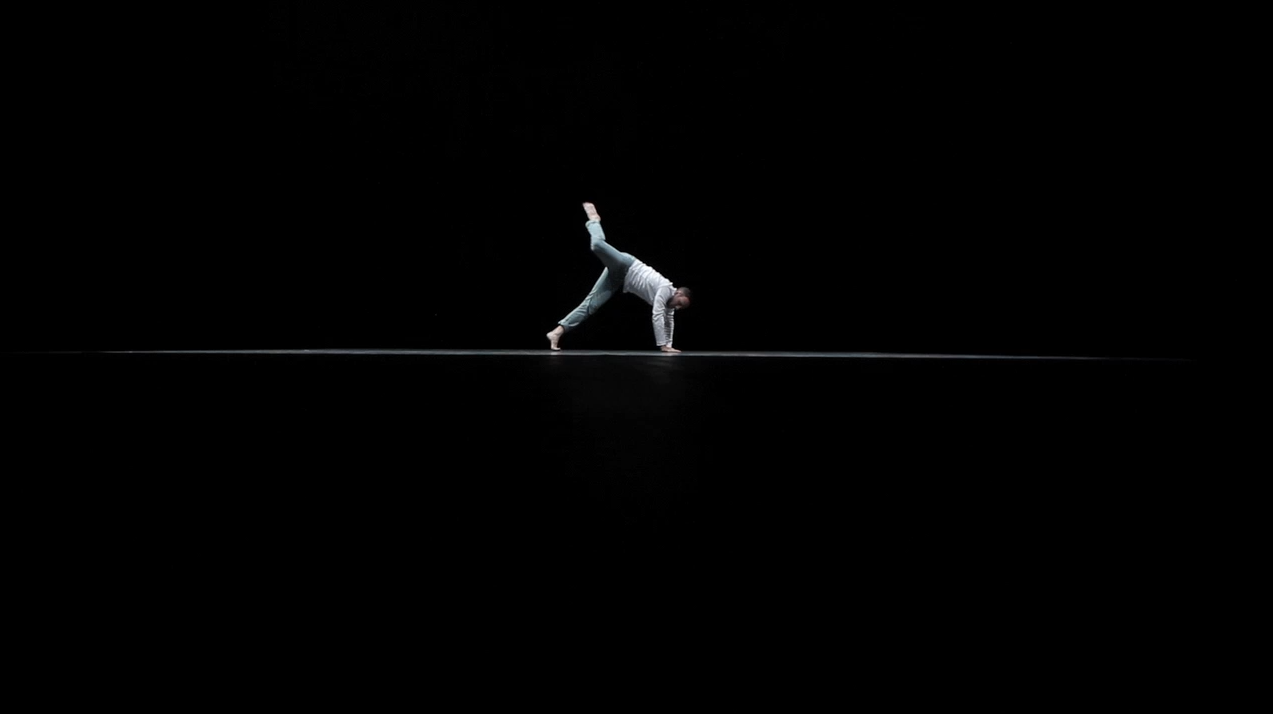
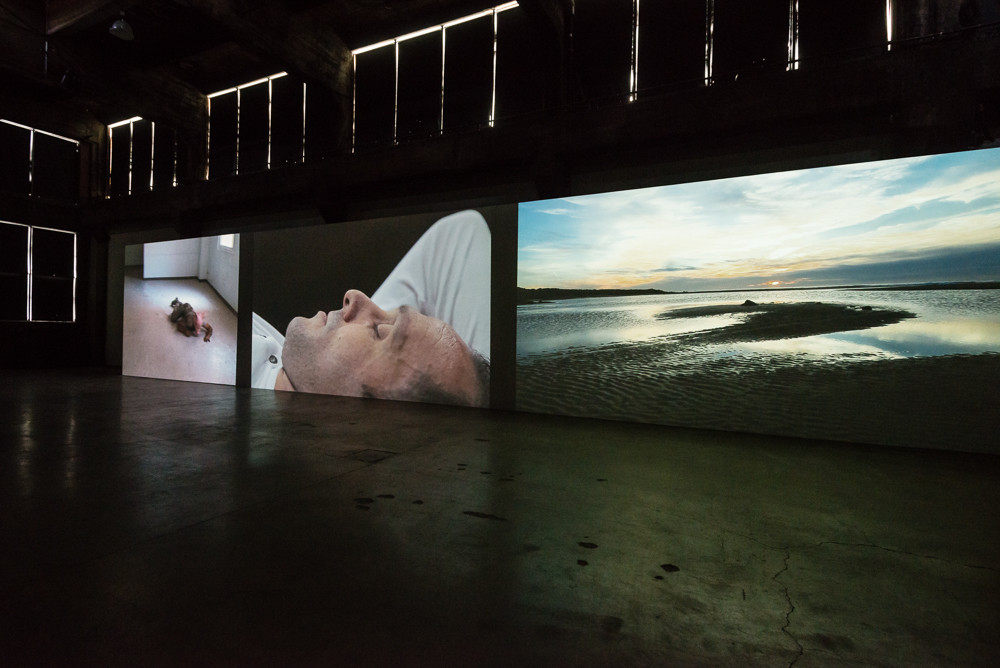
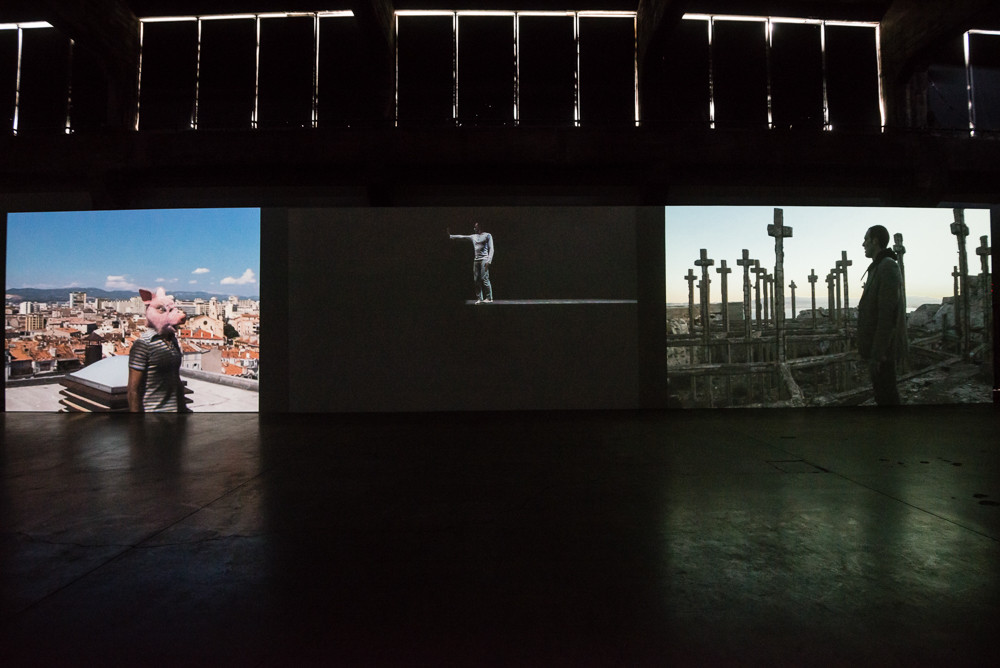
For his first exhibition in America, French artist, André Fortino, will present the video triptych Hôtel Formes Sauvages (2009-2015), a piece that has been created over the past 5 years. In addition, Fortino will restage a performance piece (Le Corps des formes live) that he has developed in collaboration with choreographer, Katharina Christl. The languages of dance and visual arts intersect in the video triptych and performance, in an exploration of new ways of conveying gestures.
Through the transformation of the Hôtel Dieu (2009) video into a score used to create the two additional works, Les Paradis sauvages (2012) and Le Corps des formes (2015), Fortino evokes the film’s ambiguous status and conflicting representations of reality and memory. The post-performance filmed piece becomes a sort of document to be replayed—one that is no longer faithful to the source, but that carries multiple interpretations and endless possibilities.
The improvised video, Hôtel Dieu, shows a masked character exploring a deserted site in which each room and object encountered urgently call for an energetic and very physical response. While revisiting the video piece a second time, Fortino noticed connections between the abandoned environment and the spontaneous gestures it had elicited, a structure that hadn’t been apparent to him when he was initially reacting instinctively to the site. A new form of writing was then revealed, which gave Fortino the idea of working with videographer, Hadrien Bels, to reshoot each of the original movements and treat them as objects that are independent of their initial context, and which therefore take on new, more cinematographic, dimensions when performed in new landscapes. For the third work, Fortino approached dancer and choreographer, Christl, to create a choreography based on the original video. The choreography was then performed publicly, prior to becoming the last part of the triptych. Rather than drawing inspiration from the gestures and masked character featured in Hôtel Dieu, Christl was interested in the movement of objects and furniture within the space, putting the emphasis on trajectories, and thus on transforming Fortino, himself, into an object. Given that the artist has no dance training, for this project it was necessary for him to become acquainted with another way of working. Fortino was required to memorize, control his breathing and energy to sustain the intensity of his performance until the end, and thus embody the ideas of a third party.
Making advantageous use of the high ceilings and industrial style of the Darling Foundry’s main exhibition space, the 3 video works will be projected onto large screens. The viewer will therefore literally be immersed in the images, seemingly coming face to face with the life-sized characters in a very physical manner. The perfectly synchronized videos will enable gestures and movements to be followed easily from one screen to the next, serving to highlight the levels of interpretation and imagination implied by successive replays.
André Fortino
French artist, André Fortino, lives and works in Marseille. He is a performance artist, who also explores video and installation. Fortino obtained a Diplôme National Supérieur of fine arts from the Annecy School of Art (ESAAA).
Since 2007, he has participated in numerous group exhibitions, namely presented by Le Musée d’Art Contemporain de Marseille (2014), the Mamco, musée d’art moderne et contemporain (Geneva, 2014), La maison rouge in Paris (2014), and the Centre Pompidou in Paris, as part of the Rencontres internationales Paris / Berlin / Madrid (2010).
Fortino has had solo exhibitions at Galerie Territoires Partagés (Marseille, 2014), La compagnie, lieu de création (Marseille, 2013), and at Fog Galerie (Paris, 2012). He has participated in many residencies, including at the Mamco in Geneva (2014) and ESAAA in Annecy (2013), and in Algiers (2010), organized in collaboration with Rivages cultural association. In 2015, the first monograph about his work was published by the ESAAA, and will be distributed by Presses du Réel.
Curator
Anne-Marie St-Jean Aubre
